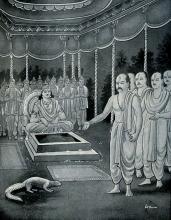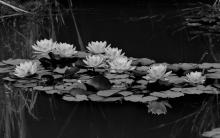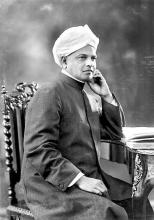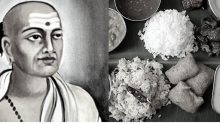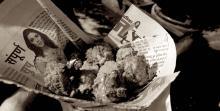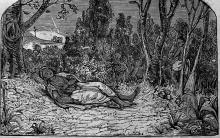Author:sandeep
[अयं हि शतावधानिना आर्यगणेशेन कन्नडभाषया लिखितस्य कस्यचन लेखस्य सङ्क्षिप्तोऽनुवादः।]
नैतत्तिरोहितं कलाभिज्ञानां यन् मोनालिसाया निगूढो मन्दहासः कश्चिदनेकेषां व्याख्यानानां विषयीभूत इति। एवमेव ह्याम्लेट्नामकस्य द्वन्द्वनिष्ठः कश्चन विलक्षणः स्वभावो नैकविश्लेषणपात्रीभूतः। इत्थं च बेलूरुनगरस्था मुकुरमुग्धाभिधा शिलाबालिका निजास्यगतेन केनचिन्म्लानोत्तरेण भावेन भूयसा विमर्शविषयीकृता। अनयैव रीत्या नाटकानां प्राग्रहरस्य तावदभिज्ञानशाकुन्तलस्य पद्येष्वन्यतमं व्याख्याभिरनेकाभिः परिभूषितं विलसति। तच्च पद्यमिदम्—
रम्याणि वीक्ष्य मधुरांश्च निशम्य शब्दान्
Out of my grandfathers, hasn’t it been evident that my third grandfather Sheenanna was very dear to me? But when it comes to him, will I be able to talk about every facet of his nature without hiding anything? Is it respectable? On the other hand, would it be appropriate if I tell only tell about his acceptable behaviour and skip the rest? Forget about being appropriate; will the readers benefit as much as they would have by my writings? This is the apprehension I have.
Every human has flaws, however small or big.
Dṛṣṭaṃ kimapi loke'smin
Dharmarāja went to the Himalayas with his younger bothers and gathered the ingredients required for the Aśvamedha-yāga. He also found large quantities of wealth there. He got them loaded on to the backs of elephants and camels and got his servants bring them to the capital city. Days rolled on and the day of the yāga came closer. Kṛṣṇa came to Hastinagara with his sister Subhadrā, brother Balarāma and several other Yādavas. Uttarā gave birth to a baby boy when Kṛṣṇa was in Hastināpura. Just as was expected, the baby was born dead.
“Kālidāsa composed poems in Kannada”:
वाणीवीणागुणरणनचिन्माधुरीमोदयुक्त्या
गौरीशर्वाद्वयनयजयप्रीतिसंस्फूर्तिशक्त्या।
देशस्यास्य प्रसृमरकलाशास्त्रविज्ञानरक्त्या
कर्णाटोक्त्या कवनमकरोत् कालिदासः कवीन्द्रः॥[1]
‘Kamala Lectures’
In 1926, the Culcutta University invited Srinivasa Sastri to deliver talks as a part of the Kamala Lectures series. The word ‘Kamala’ that appears in the title of the lecture series was the name of the daughter of Ashutosh Mukherjee, the Vice Chancellor of the University. He had initiated the series of endowment lectures and had donated for the purpose. As per the rules of the series, the person invited to deliver lectures at the Culcutta University was to deliver the same series at another university in the country.
গীতায় কৃষ্ণ একজন “স্থিতপ্রজ্ঞ” ব্যক্তি হয়ে ওঠার বিষয়ে একটি গুরুত্বপূর্ণ ধারণার অবতারণা করেছেন, অর্থাৎ, একজন ব্যক্তি যিনি বিচার-বিবেচনাপূর্ণ এবং অবিচলিত বুদ্ধিমত্তার অধিকারী। তিনি বলেন, “যিনি স্বার্থপরতা বর্জন করে শুধুমাত্র সত্যের স্বরূপেই পরিতৃপ্তি লাভ করেন, তিনিই ‘স্থিতপ্রজ্ঞ’ “(ভ. গী. ২.৫৫)। অন্যভাবে বলা যায়, তিনি অর্জুনকে ‘দেহাভিমান’ ত্যাগ করতে বলছেন, যার অর্থ সেইপ্রকার মনোভাব, যখন জীবনের প্রতি নিবদ্ধ দৃষ্টি একরকম দেহ ও বস্তুভিত্তিক ঘোরের মধ্যে থাকে।




